Chrysalis
What is Dyspraxia?
Dyspraxia is a motor coordination disorder, categorised in the UK as a “Specific Learning Difficulty” or SpLD. Dyspraxia predominantly affects the fine and gross motor skills of a person.
- Fine Motor Skills: this refers to the small movements we make with our bodies, such as tying shoelaces, writing something, or the action of picking up or placing down an object.
- Gross Motor Skills: this refers to the larger movements we make, such as catching/kicking a ball, riding a bike, or swimming.
As well as affecting the motor skills of a person, Dyspraxia may also affect spatial awareness, which can present itself as bumping into things, or struggling to walk in a straight line.
Dyspraxia is surprisingly common, affecting up to 10% of the population, with 2% showing severe symptoms. Often, a diagnosis is made during childhood, but many slip the net and do not receive any kind of diagnosis until adulthood, if at all.
For those whose symptoms are spotted during childhood, the process of diagnosis must first eliminate the possibility of other conditions such as Cerebral Palsy, and also consider whether the motor-coordination of the child is below that of their age group (their chronological age). Clinicians state diagnosis is not generally possible below the age of 5 unless symptoms are severe. A child below this age with symptoms may eventually catch up and go on to develop motor coordination which is inline with their chronological development.
Unfortunately, in cases where symptoms are especially mild/subtle, the symptoms of Dyspraxia go largely unnoticed. The child may be aware of their own struggles – such as having difficulty playing sports – and will make a conscious effort to avoid these activities. A child who cannot do a certain activity may be seen as just that, and will therefore be looked over by educational professionals and/or parents.
Other names
Dyspraxia may also be called:
Chrysalis
Dyspraxia and the Brain
Neurologically, Dyspraxia affects the cerebellum. Tucked behind the brainstem, this structure is small and roughly shaped like a walnut. Interestingly there are more neurons here than in any other part of the brain – its primary role being to coordinate posture, balance, speech and movement. In essence, it ensures everything runs smoothly, if you will.
Those with Dyspraxia, however, experience misfiring between those neurons controlling their voluntary movements, leading to the physical symptoms noted above.
The cerebellum is not the only area of the brain affected; Dyspraxia can also affect the prefrontal cortex (PFC) in the front part of the brain. This is the area of the brain responsible for how we think. This is the area of the brain responsible for how we think. It aids in our decision making and planning, as well as time management and how we regulate our emotions. Medical professionals refer to these as our Executive Functioning (EF).
Conditions linked with Dyspraxia
- Dyslexia
- Autism
- ADHD (Attention Deficit Hyperactivity Disorder)
- Dyscalculia
Note that: the PFC is the last area of the brain to fully mature this generally happens around 25-26 years of age; as such, with a condition like Dyspraxia, it can be underdeveloped or impaired, making life more of a challenge.
Interesting Fact
Up to 70% of children with language problems have comorbid Dyspraxia
A large number of children with autism also display dyspraxia symptoms, but it remains unclear as to whether this is due to comorbidities or a motor dysfunction unique to autism.
Reading and writing disorders commonly overlap with Dyspraxia.
Chrysalis
What school can feel like for a Dyspraxic child
Not all learners come neatly labelled or will overtly tell you how they feel
Chrysalis
Special personal note from me to you:
This condition is NOT related to a lack of intelligence so if you are Dyspraxic, please believe me when I tell you, you are NOT thick or stupid. Take a read of my bio. Hopefully, this will help change your mind.
